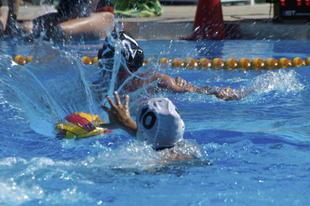
Examining the history of action photography can help you capture moments of time you wouldn't otherwise realize was possible.
What Is Action Photography?
Action photography addresses the quest to capture and convey motion in pictures. Our world is constantly in motion, though some things move slower than others. Since photography is a still medium, it's up to the photographer to employ specific camera techniques to shoot a series of shots that will convince the viewer that he or she is not missing a moment of the action.
Sports photography is considered the epitome of action photography. However, while the photo categories are interchangeable, action photography also describes other subjects that move, including:
- Speeding cars
- Flying birds
- Crashing waves
- Racing roller coasters
- Jumping children
- Moving trains
- Dolphins charging a bait ball
- Wind-blown trees
Action photography requires precise skills and being in the right place at the right time. Understanding the timing of specific actions you are trying to shoot allows you to capture the moment when the action is most dramatic.
Innovators of Action Photography
No one understands the principles behind action photography better than the men who are credited with inventing motion photography.
George William Beldam (1868-1937)
George Beldam descended from an English cricketing family, but went on to become a noted photographer when he learned how to combine his two passions. He is considered by many as one of the founding fathers of action photography. He used the game of cricket as the focus of his first motion shots. Beldam later broadened his approach to action photography by covering other sports and incorporating athletes of all calibers in his portfolio. Before his death, Beldam collaborated with author C.B. Fry to illustrate two instructional photo books featuring some of his best action photos.
Eadweard Muybridge (1830-1904)
Eadweard Muybridge was born Edward James Muggeridge in England in 1830. He is credited with inventing action photography due in large part to his historic series of motion pictures featuring running horses. In the late 1880s, roughly 30 years after he moved to the United States, Muybridge created an encyclopedic anatomy of action photographs, depicting humans and animals in various stages of work and play. Muybridge was able to capture the first action photos via an automated shutter mechanism he developed on his own.
To document galloping horses, Muybridge set up a row of a dozen cameras rigged by a wire that connected to the shutters. The cameras shot a series of photos capturing the different phases of the animal's motion. Muybridge's experiments with action photography greatly influenced Thomas Edison and inspired the subsequent introduction of high-speed shutters into movie-making technology. For this reason, Muybridge's work is considered the birth of early motion pictures.
Evolution of Action Photography
Cameras have come a long way since the days of Beldam and Muybridge. These days, most moderately priced digital cameras feature modes that allow you to capture crystal clear action shots without having to take an advanced photography class. However, having an expensive camera doesn't insure that you will capture outstanding action shots each time you press the shutter. Just as cameras have evolved over time to help photographers capture excellent motion shots, so has knowledge regarding action photography.
Here are some tips to help you increase your chances of capturing a frame worthy action shot:
Know Your Subject
Researching your subject prior to shooting helps you better anticipate the action. Consequently, you will be able to focus with greater accuracy and hit the shutter at the right time. For example, if you are trying to document your son scoring the winning soccer goal, you have to anticipate his kick and push the shutter button before the action, so the camera's mechanisms have time to record the move as it's happening.
Get Close
The closer you are to your subjects, the better you can record their actions. By obtaining unlimited access to your subject you will be able to position yourself in an area where you can snap the best angle. Angular momentum is critical in action photography as it determines how your subject will appear and the type of background you will be shooting.
Capture Emotion
Shots that lack emotion are boring. If your pictures lack story-telling ability, then few people will want to view them. Whether you are shooting little league baseball players straining to catch a fly ball or horses trotting back to their stable, look for the emotion in the shot. In most cases this requires shooting dozens of images, but it only takes a single outstanding photo to make a lasting impression on a viewer.
Learning More About the History of Action Photography
To learn more about the history of action photography, consider reading the following books dedicated to providing in-depth analysis and tips to take superior action shots:







